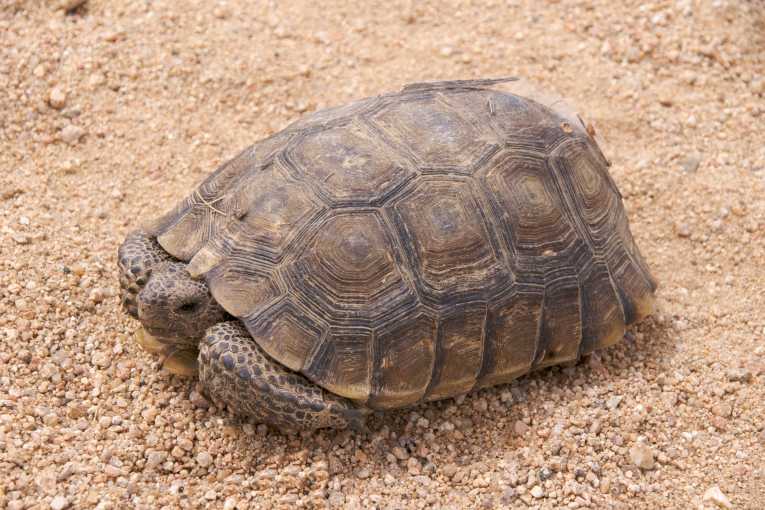The desert tortoise, Gopherus agassizii, has been suffering some serious identity problems. Luckily, Professor Robert Murphy's crack team of scientists were on hand to employ some police-esque forensic tactics to unravel the tricky tortoise mystery.
Desert tortoises were thought to be found through southwestern USA, including parts of California, Nevada, Utah and Arizona, and Mexico. They are also known as Agassiz's land tortoises, amongst other names, but disagreement about what to call the tortoises is the least confusing part of their tale. For 150 years since the species' discovery, it was believed that the desert tortoise is one species. However, evidence has been mounting that desert tortoises should in fact be two separate species. Desert tortoises in the Mojave desert - covering southeastern California and Utah - and Sonaran desert - covering Arizona, Baja California and Mexico - live in very different habitats. The Mojave desert is full of valleys covered in scrub and yucca, whereas the Sonoran desert is predominantly rocky hillsides. The separate desert tortoise populations, divided by the Colorado River, differ in their reproductive strategies, physical and behavioural adaptations.
Professor Murphy's team of scientists used DNA profiling to find out where the type specimen, used to describe the species 150 years ago, came from. They compared the type specimen DNA to the DNA of tortoises living in California and Arizona today, to determine whether the different populations were in fact different species. Excitingly, they found that the populations are indeed different species. The Sonoran desert population has been named Morafka's tortoise, Gopherus morafkai, after Professor David Morafka, a tortoise scientist. The Mojave desert population retains the name Agassiz's land tortoise. After all that hard work, Professor Murphy found that Morafka's tortoise may actually be comprised of two different species. Now the team need to do more work to determine how many species of desert tortoise there actually are.
Splitting one species into two - or more - always has implications for the species' conservation. Agassiz's land tortoise has now lost 70 percent of its range through being split into two species. This may have dire consequences for Agassiz's land tortoises, as species with small distributions are for more likely to become extinct. Although the two desert tortoise species can hybridise in captivity, scientists would prefer to keep them as genetically distinct populations. The Mojave desert population was already threatened by habitat loss and disease. Agassiz's desert tortoise is currently listed as threatened under the U.S. Endangered Species Act. Now that the Sonoran desert population can no longer be used to supplement the threatened Mojave desert population through individual translocations, both species may require a high level of protection to maximize their chances of survival.
To find out more, go to the journal Zoo Keys to read the full study, entitled "The dazed and confused identity of Agassiz's land tortoise, Gopherus agassizii (Testudines, Testudinidae) with the description of a new species, and its consequences for conservation"
Top Image: Mojave desert tortoise (Gopherus Agassizii) Credit: © PixyNL










